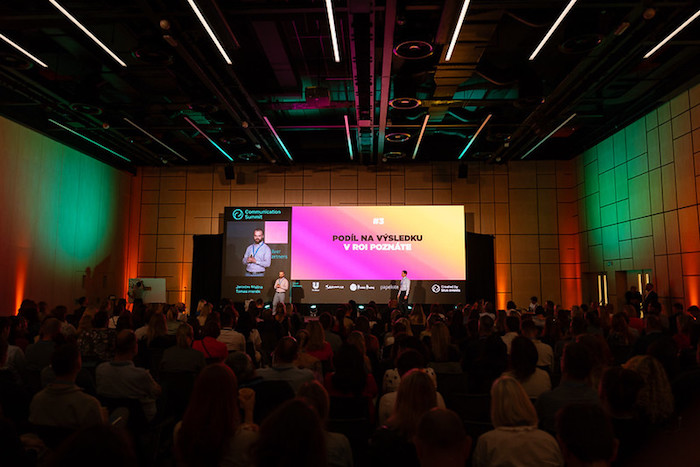Communicate positively, simply, without greenwashing and smartly with AI. That's how the 7th annual Communication Summit conference produced by Blue Events, which took place last week at the O2 universum, could be summed up.
Media and creatives together again?
The evolution of the advertising and media landscape has changed so much over the past decade that the time has come for media and creative agencies to come together again. They used to work together in the 1990s, but then separated as part of their specialisation. Their reunification may be the answer to the more complex environment of the media market, said Jaroslav Malina and Tomáš Přeněk from Publicis Groupe at the beginning of the conference. "The pace of change and innovation is increasing and all parties need to be involved in decision-making. It also shows that media buying and strategy have the biggest contribution to create effective outputs," they reasoned. Indeed, they consider integration to be essential for better business results. They also stressed that the marketing budget should be viewed as an investment, not an expense item. Linking creative and media planning should also result in no duplication of costs for the client.
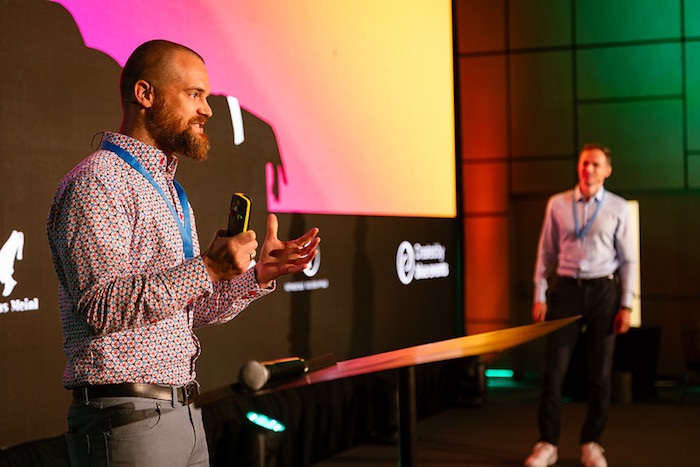 Source: Blue Events
Source: Blue EventsWhat impresses and what is positive in advertising?
Roughly one-fifth of the domestic online population find advertising helpful when choosing products (17%). For just under half (49%) the reverse is true and one-third of the population (34%) find the role of advertising ambivalent. Half of the population has also not been interested in any advertising recently. The data was presented at the conference by Tomáš Hynčica and Ondřej Veis from the research agency NADA Reasearch.
The data revealed that there are no major socio-demographic differences (i.e. age, place of residence, socio-economic status) between the group of people who consider advertising positive and the group who reject it. However, they differ in some interests and behaviours. Those who perceive advertising as beneficial are more likely to use technological tools (tablet, smart watch), watch VOD services, attend mass cultural events, like to read print media, and take care of themselves (visiting beauty salons, investing in health). At the same time, in each segment it is possible to identify, based on the data, which brands are helped by advertising and which are helped less (e.g. in the auto-moto segment, BMW is helped more, in the IT segment, Apple is helped more). The pharmaceutical segment benefits the most (in particular the brands Ibalgin and Paralen). Adverts that contain humour and exaggeration, a story with a good ending, positive emotions, a funny story or famous actors are more likely to attract attention. However, the data also show that criticism of competitors (AirBank) or drastic imagery (Besip) can also contribute to an ad's appeal.
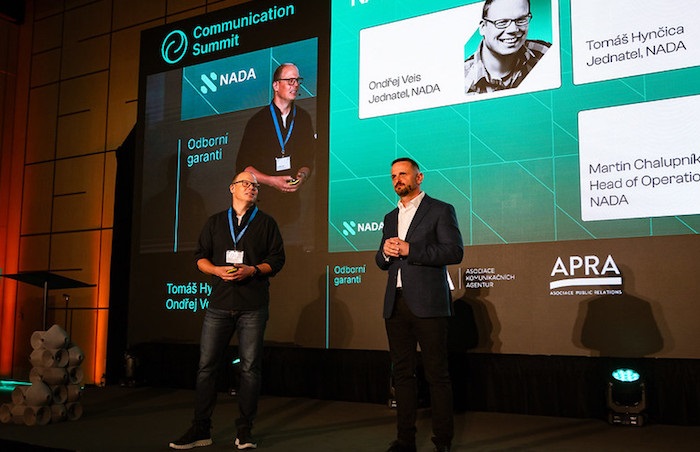 Source: Blue Events
Source: Blue EventsO2: The new Eva has better results
O2's marketing director David Daneš spoke about the new marketing communications concept and creative at the conference. He introduced the audience to the first results of the new advertising story, in which the operator puts more emphasis on the benefits of technology on human life. The first results showed that the change of concept did not lead to a weakening of branding, which the operator was concerned about, on the contrary it resulted in higher affinity and positive emotions. Also, the existing main face of O2's campaigns, the character of Eva, who has undergone a makeover in the new concept, saw higher affinity and positive emotions in the new ads, as well as an increase in the technological aspect.
Why doesn't the media want news about corporate goodness?
Bohuslav Bohunek, former editor and now marketing manager at Scio, spoke about why the media doesn't like to publish corporate good news. He explained that the media works on the principle of "bad news is good news" and that most "corporate good" news belongs on the corporate website or corporate social networks. In his experience, journalists do not want to write about information such as company awards, employee participation in charity events or company fundraisers because they do not want to be accused of hidden advertising or do not want to highlight an individual commercial activity. Original deeds (e.g. when businessman Karel Komarek bought out Petrof pianos that were rejected by the Chinese, planting flowers that created the image of a pint) or activities (the Avon run) have a chance of success with journalists, but establishing a media partnership, teaming up with a celebrity or creating a surprise campaign are also possibilities.
Communication Summit 2024
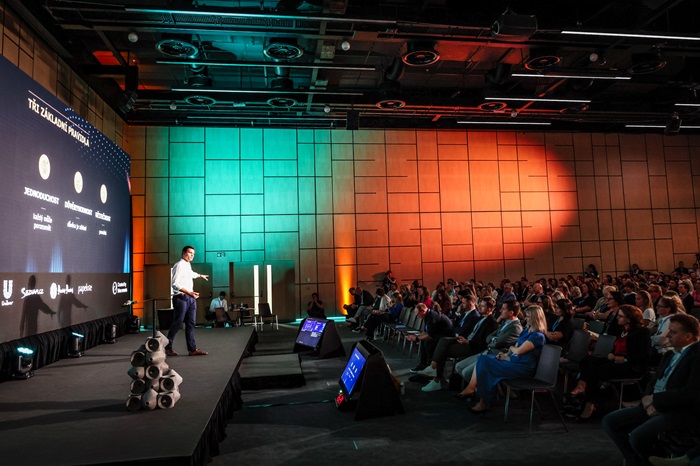 Source: Blue Events
Source: Blue EventsThe key rule of "pubs"
The keynote speaker for the conference was Česká televize presenter Daniel Stach, who captivated the audience with his enthusiasm for science and his desire to be able to communicate complex scientific phenomena to people in a way that they understand and want to share. The key is to understand the information and to convey it as clearly and simply as to friends in a pub. "Try giving it to high school students first. The goal is to have as many questions as possible after your presentation and have at least one student want to work for you. If that's successful, try the same thing at primary school. The goal is the same. Questions at the end and at least one enthusiast who wants to do what you do," Stach advised.
He revealed his creativity and imagination when he mentioned how the interview process for job applicants in CT's science department works. They all get the following three questions: what would the world look like if you were a radish? What skateboard would you buy your hamster for Christmas? And how would you react if a centaur collapsed in front of you in the park on the way home? "I've always been able to choose my colleagues correctly based on those three questions," Stach said, ending his presentation with the appeal, "Never stop asking."
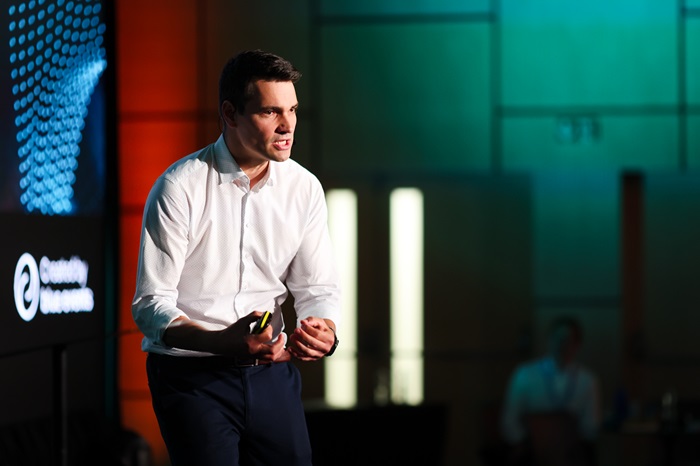 Source: Blue Events
Source: Blue EventsMarek Řípa of Seznam's marketing described the process of last year's branding campaign, in which they digitized a Jack-Russel terrier for future use in animated form. They saved money by not only not having to deal with a studio and photographer. But generating the brief for the agency using AI also saves significant time in the briefing process.
Among Czech and Slovak marketers, 41% of people use AI to create images or videos, and the figure is as high as 61% for text. This is according to recent research by Kantar in collaboration with AKA, APRA and Blue Events. Its results were presented by Věra Šídlová on behalf of Kantar at the Communication Summit. It turns out that the greatest expectations regarding the benefits of AI are associated with faster and cheaper work, (85 and 65% respectively) but also with better quality (68%!). Here, however, it should be said that we are again touching on the essence of the terms "efficiency" and "effectiveness". It is possible to create a campaign faster and cheaper. But can you also do it better? In a way that translates into sales? AI is just a tool and it depends on how good the data is put into it.
Consistency of communication is a big advantage: it makes generative AI learn what it wants faster and more accurately, and then it's easier to hit the mark. Further, AI can also help smaller brands test whether their creative is delivering the expected results in a way that larger companies, with both bigger budgets and more robust data, have been able to do until now.
Dataclair.ai, a technology division under O2 represented by Ivo Brýdl, uses AI to plan, for example, OOH advertising. Michal Hroneš from Newton Media also demonstrated the use of advanced algorithms. Using a case study for a global client, he described how they dealt with a crisis situation when negative news about his company began to spread abroad. By evaluating the huge amount of data in the form of media reports, social media mentions and sentiment, it is also easier to predict the next developments and prepare for them effectively.
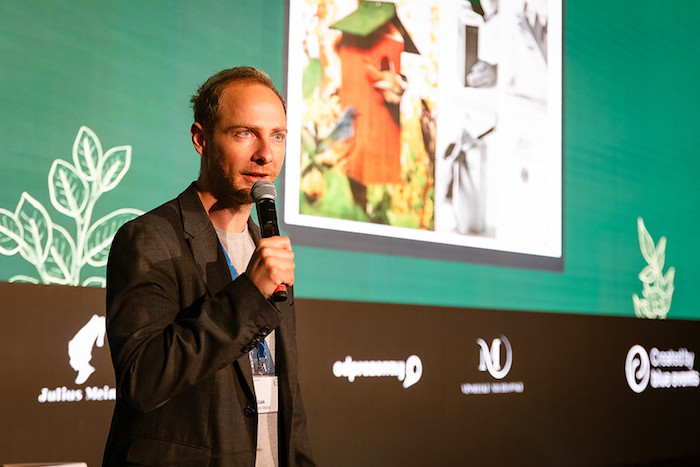 Source: Blue Events
Source: Blue EventsWe are responsible for greenwashing ourselves
A tougher crackdown on greenwashing awaits us, seemingly narrowing the manipulative space for communication. As they say, limits awaken creativity, and Pavel Galík, Director of Strategy and Digital at Omnicom Media Group, reminded us that brands themselves are primarily responsible for greenwashing. And a lot of hackneyed "green" topics like straws, planting trees after fires or making birdhouses are pointless dead ends that have no real impact. Galík is also on the board of the Change for the Better platform and won the Ric Pic! presentation competition, which is part of the Communication Summit. This year it focused specifically on greenwashing. The clear message of his seven-minute presentation was a call to work with real experts, because without them, brands can't come up with anything meaningful.
Source: mediaguru.cz

